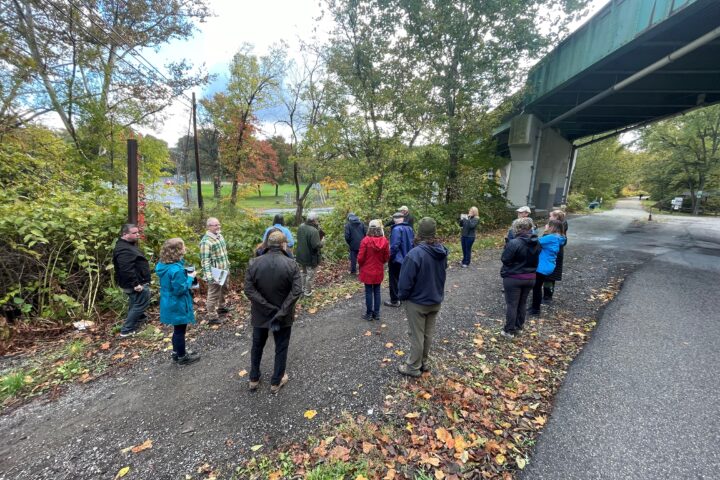Open Letter to
Members of the General Assembly and Governor Wolf
June 14, 2021
Across America, state legislatures are choosing to invest American Rescue Plan dollars in the green infrastructure that secures and improves the economic, environmental, and public health and safety of their communities. The Pennsylvania General Assembly should be a leader too by reinvesting at least $500 million (7%) of the state’s ARP money in green infrastructure. Actions of other states include a broad range of green infrastructure spending:
- Florida will invest $300 million in land and easement acquisitions to conserve natural and working lands and $500 million to address flooding and sea-level rise. Another $59 million will be spent to restore the Everglades and $25 million to restore water quality from springs. This is all in addition to another $658 million on other water-related infrastructure. An equivalent investment level in Pennsylvania would be $900 million (adjusting Florida’s spending proportionately downward to account for PA’s smaller population).
- New Hampshire will invest $22.6 million in state park infrastructure. This would be $205.5 million if proportioned to PA’s larger population size. (This is in addition to ($50 million—$467 million PA-adjusted—for water investments.)
- Among Indiana’s investments are $25 million ($47 million in PA-adjusted terms) for conservation land acquisition and another $60 million ($113 million, PA-adjusted) for trails.
Pennsylvania lawmakers have the enthusiastic support of Pennsylvania voters—Republicans, Democrats, and independents alike—to invest in green infrastructure. Polling from last fall[1] found that 87% of likely voters agree that even with [what was then] a tight budget, we should still find the money to invest in protecting Pennsylvania’s land, water and wildlife; that protecting water quality and land in Pennsylvania is critical to keeping the state’s economy strong (90 percent agree); and that it is more important than ever to have parks, preserves, and other public spaces where we can safely enjoy the outdoors (91 percent agree).
The American Rescue Plan provides a unique opportunity to boost investments in projects that Pennsylvanians overwhelmingly support, can be implemented now, and will continue to deliver value for decades to come. From nature-based solutions that prevent flooding and stream degradation (for example, riparian forest buffers on farms and wetland restoration), to rehabilitation of the parks and trails that underpin a large part of the Commonwealth’s tourism and outdoor recreation economies, American Rescue Plan dollars can make a tremendous difference in the lives of Pennsylvanians.
Our various green infrastructure needs are immense but the economic payoff in addressing them is huge. American Rescue Plan dollars applied to green infrastructure would support myriad small businesses and good-paying jobs with them. Projects involve surveyors, appraisers, legal services, engineers, planners, drafters, environmental remediators, hydrologists, geologists, agricultural consultants, horticulturalists, architects, landscape architects, landscapers, carpenters, electricians, plumbers, heavy equipment operators, painters, roofing contractors, fencing installers, paving contractors, material delivery, sign makers, archaeologists, and arborists. Supplies and equipment are needed from nurseries, lumber yards, quarries, building material suppliers, hardware stores, equipment manufacturers, and equipment rental businesses.
Investing in Pennsylvania’s environment makes strong fiscal sense. It is well established that state environmental investments provide tremendous rates of return—whether the measure is job creation and economic activity, avoided costs (such as public health and flooding), net tax revenues, or the wellbeing of people and communities.[2]
For more information, please reach out to the people and organizations of the Growing Greener Coalition including but not limited to:
Chesapeake Bay Foundation
Shannon Gority, PA Executive Director
sgority@cbf.org
Ducks Unlimited
Nikki Ghorpade, Government Affairs Representative
nghorpade@ducks.org
Conservation Voters of PA
Joshua McNeil, Executive Director
joshua.mcneil@conservationpa.org
Foundation for Pennsylvania Watersheds
John Dawes, Executive Director
rjdawes1@pennsylvaniawatersheds.org
Lancaster Farmland Trust
Jeffrey Swinehart, Chief Operating Officer
jswinehart@lancasterfarmlandtrust.org
Natural Lands
Oliver P. Bass, President
oliver.bass@natlands.org
PennFuture
Jacquelyn Bonomo, President & CEO
bonomo@pennfuture.org
Pennsylvania Environmental Council
John Walliser, Senior Vice President
jwalliser@pecpa.org
Pennsylvania Parks and Forests Foundation
Marci Mowery, President
mmowery-ppff@pa.net
Pennsylvania Recreation & Park Society
Tim Herd, CEO
herd@prps.org
Sierra Club PA Chapter
Jen Quinn, Legislative and Political Director
jen.quinn@sierraclub.org
Rails-to-Trails Conservancy
Tom Sexton, Northeast Regional Director
tom@railstotrails.org
The Conservation Fund
Kyle D. Shenk, Northeast Region Director
kshenk@conservationfund.org
The Nature Conservancy, PA/DE Chapter
Ronald L. Ramsey, Senior Policy Advisor
rramsey@tnc.org
Theodore Roosevelt Conservation Partnership
Derek Eberly, Pennsylvania Field Organizer
deberly@trcp.org
The Trust for Public Land
Owen Franklin, PA State Director
owen.franklin@tpl.org
Trout Unlimited
Jennifer Orr-Greene, Eastern Policy Director
jen.orrgreene@tu.org
WeConservePA
Andrew M. Loza, Executive Director
aloza@weconservepa.org
Western Pennsylvania Conservancy
Cynthia Carrow, Vice President
ccarrow@paconserve.org
[1] TargetSmart survey of 1,332 likely PA voters conducted September 20-27, 2020; credibility interval of +/- 3.0%
[2] See the numerous studies documenting the benefits in the Economic Benefits section of https://conservationtools.org.




